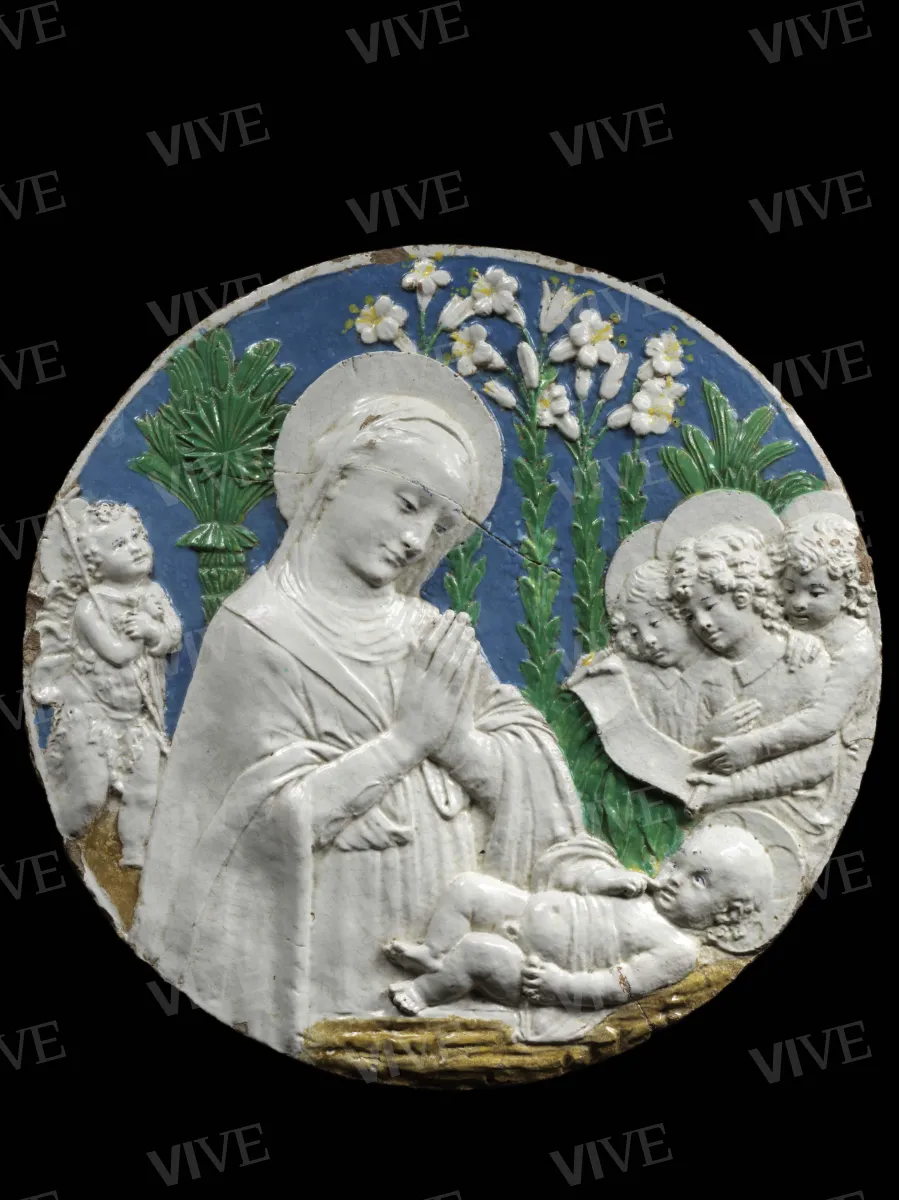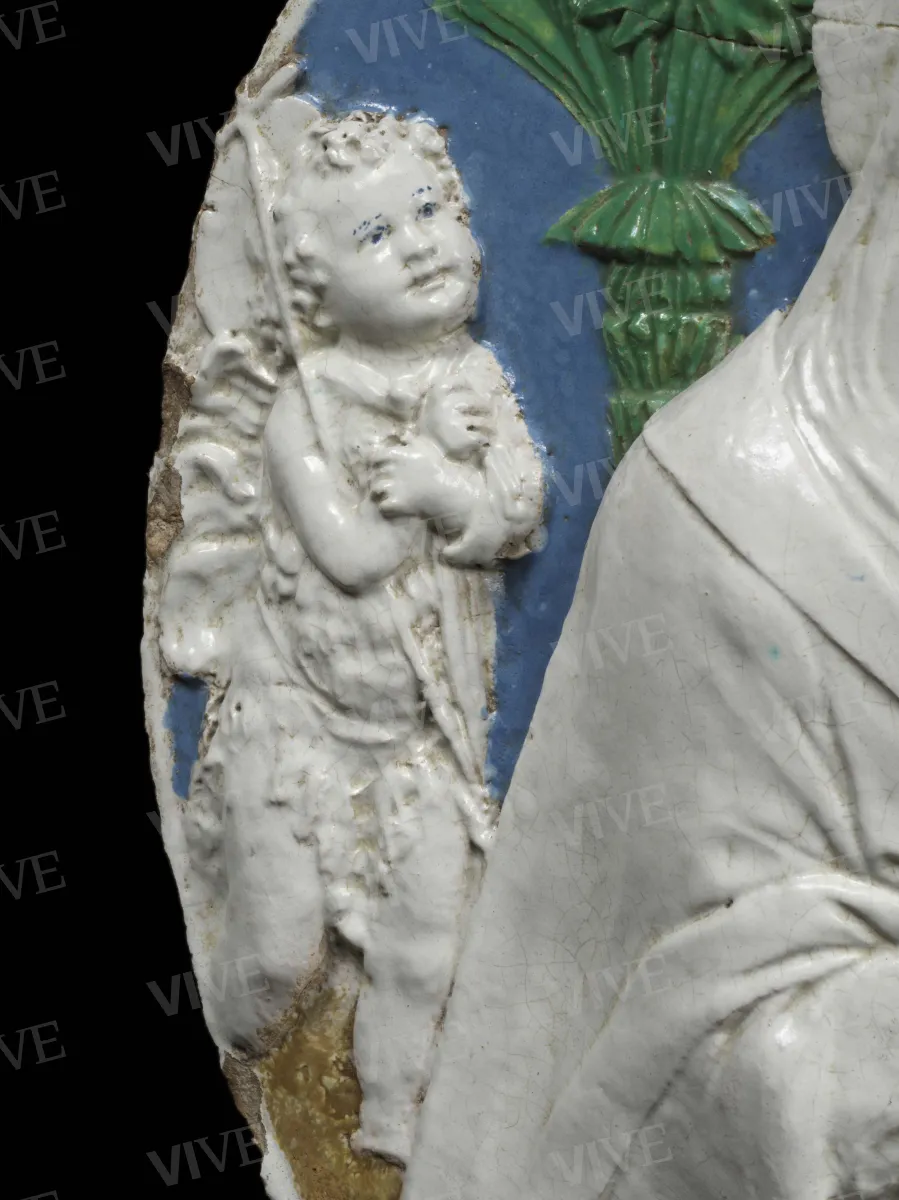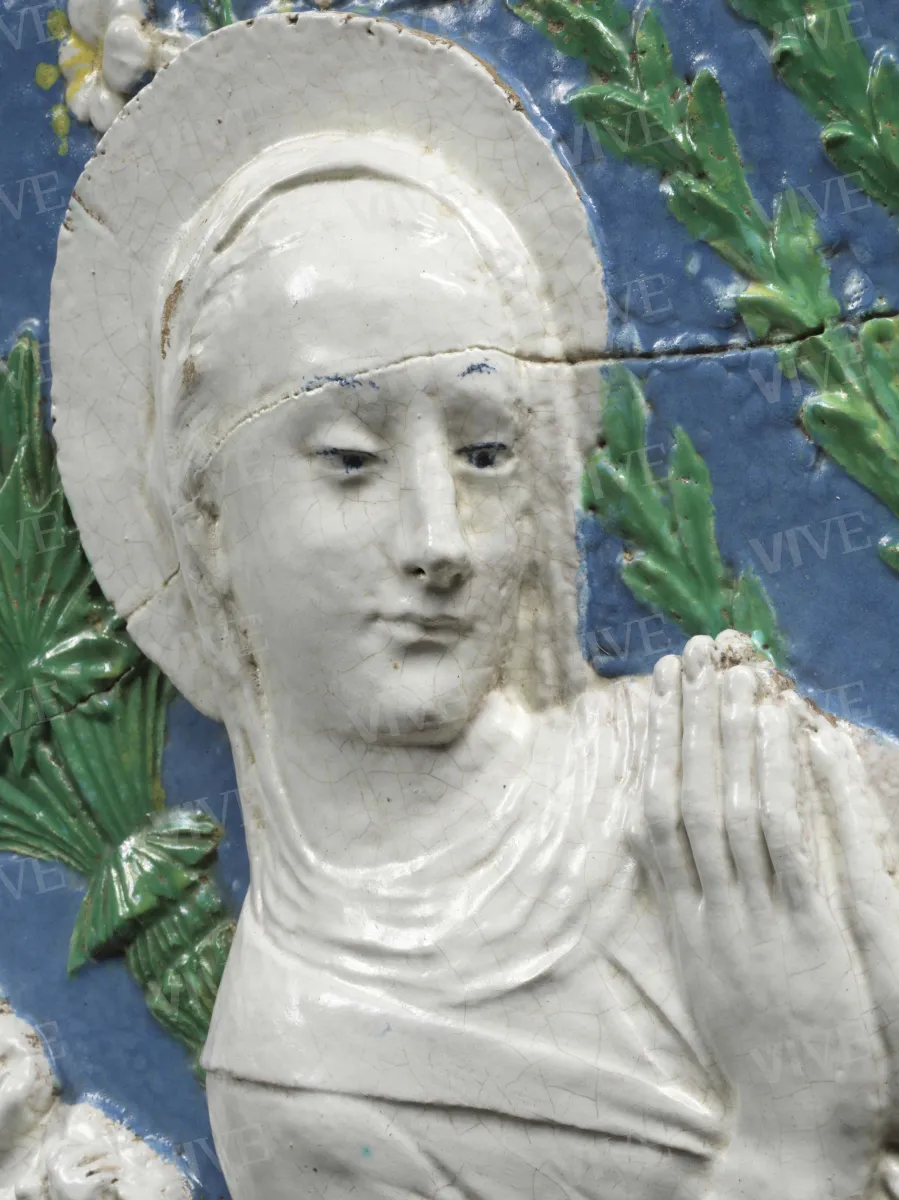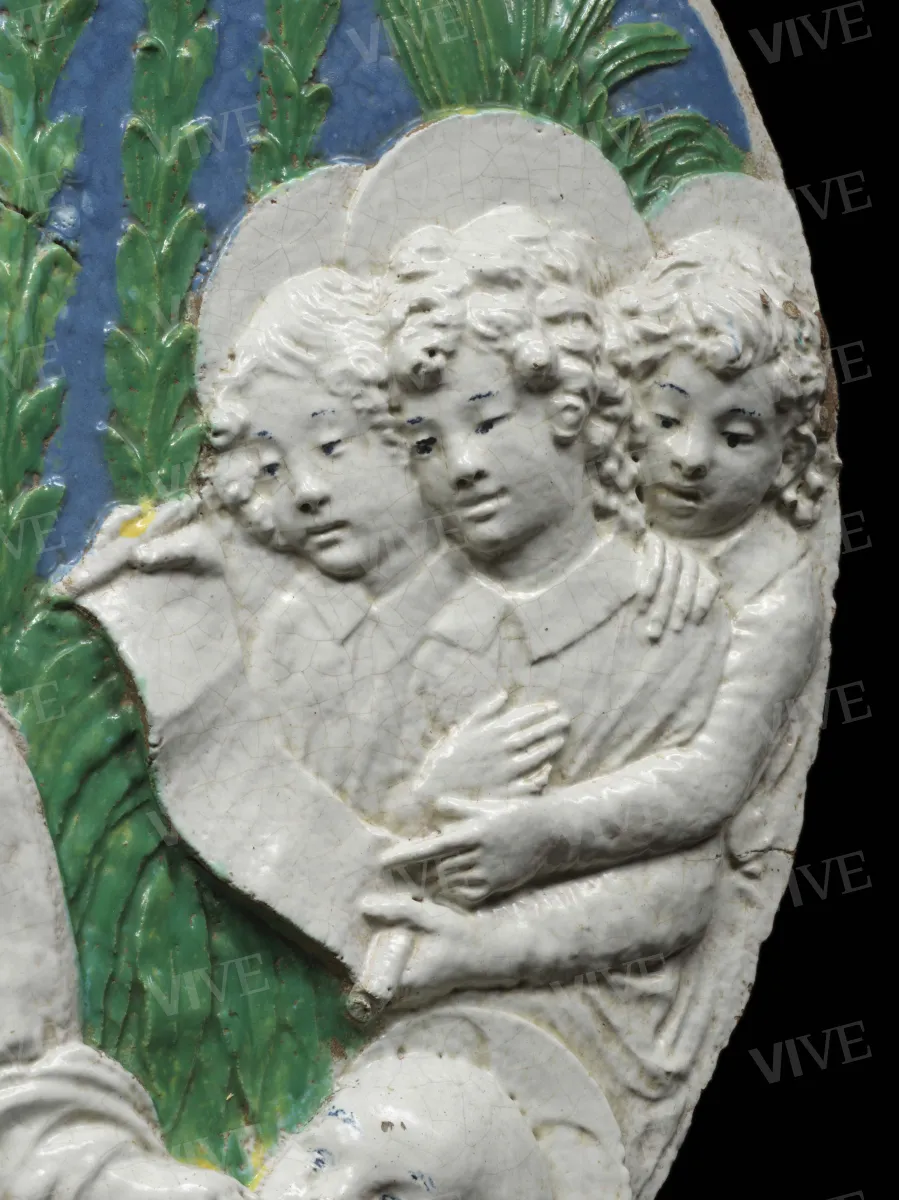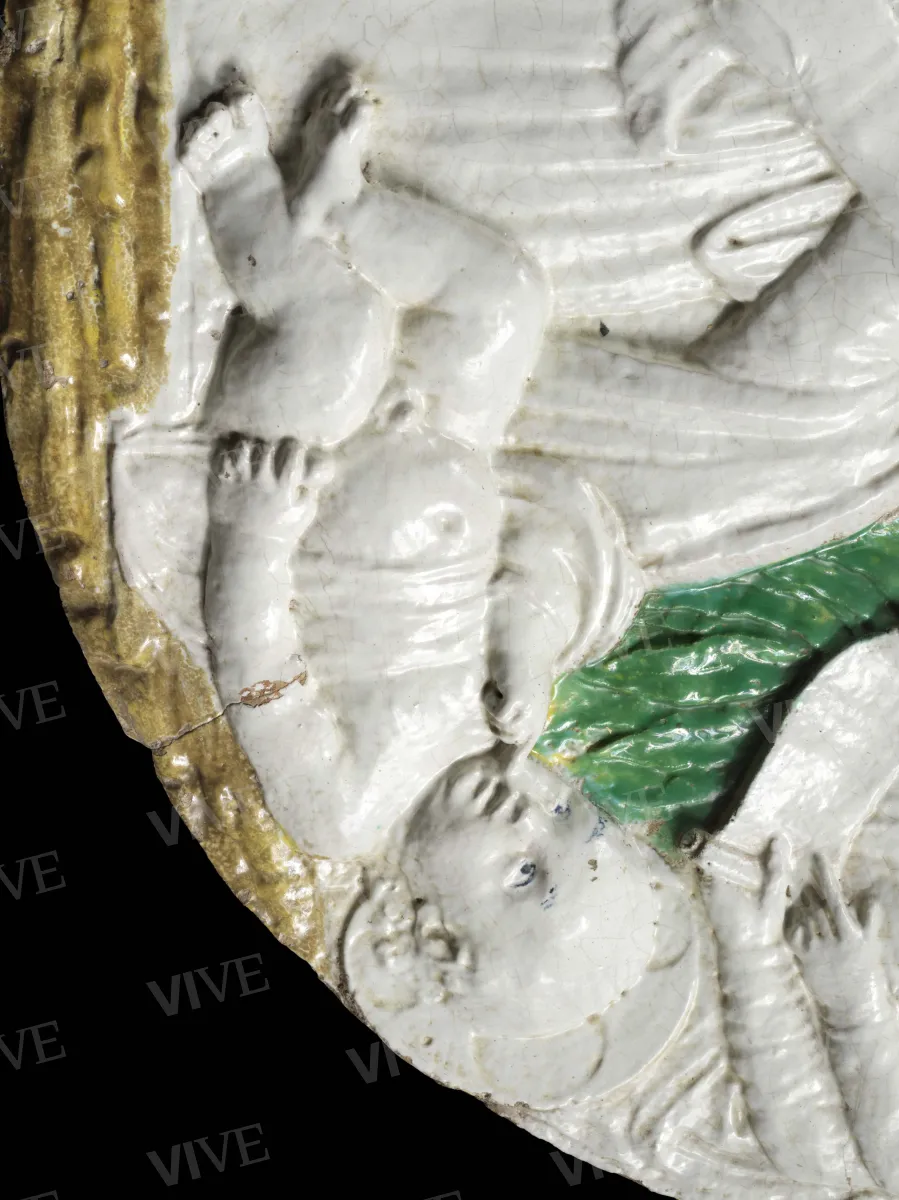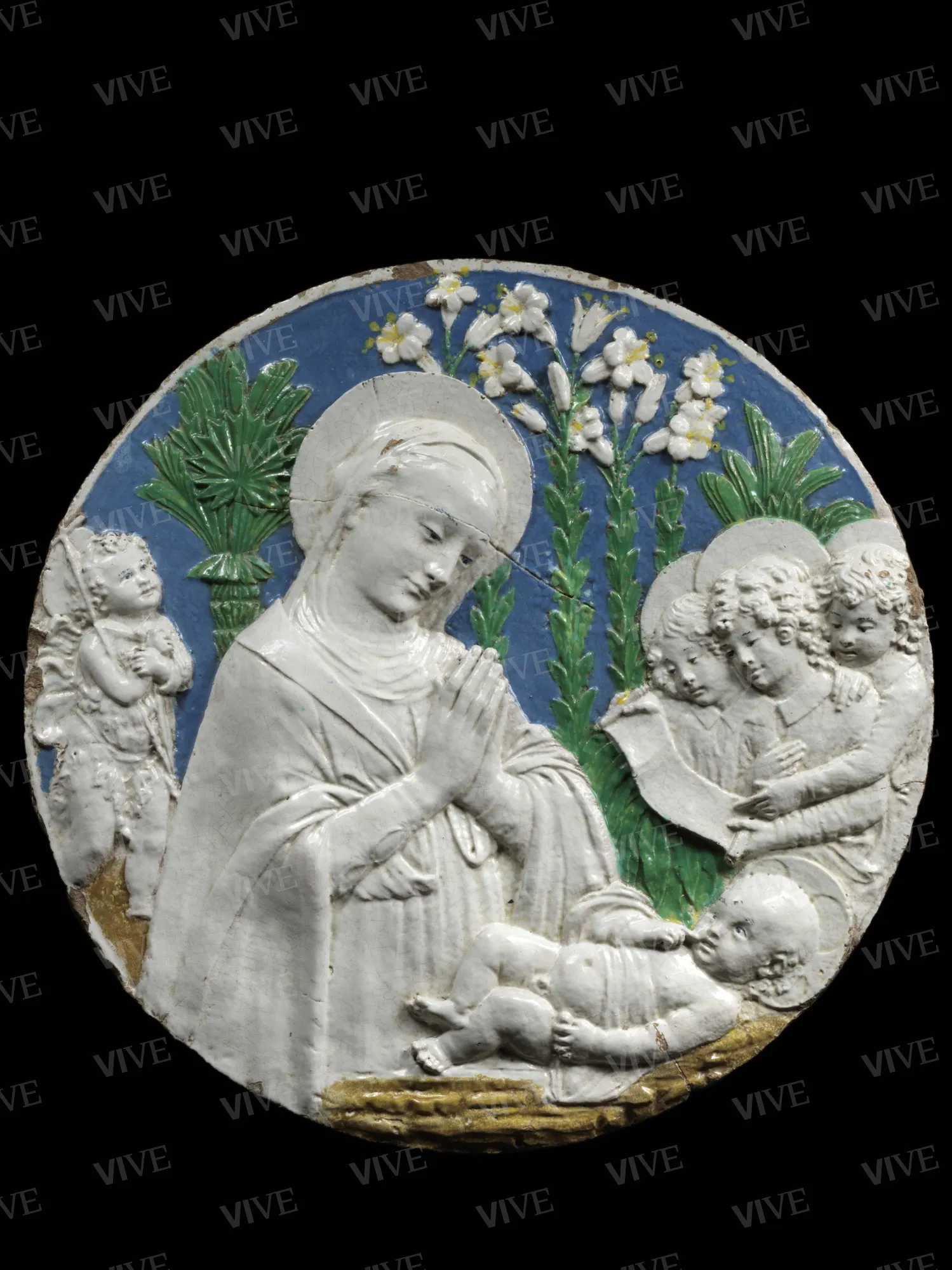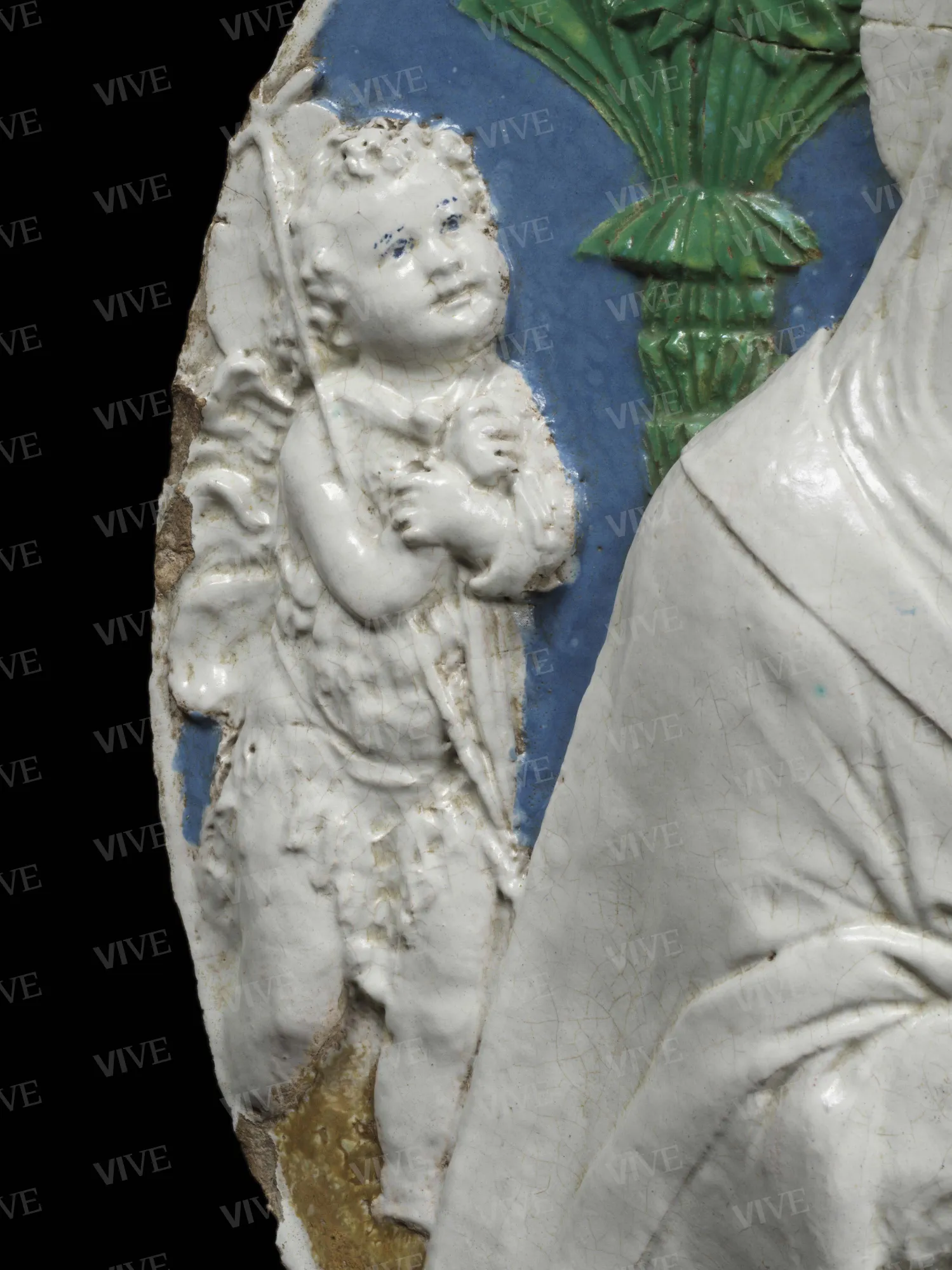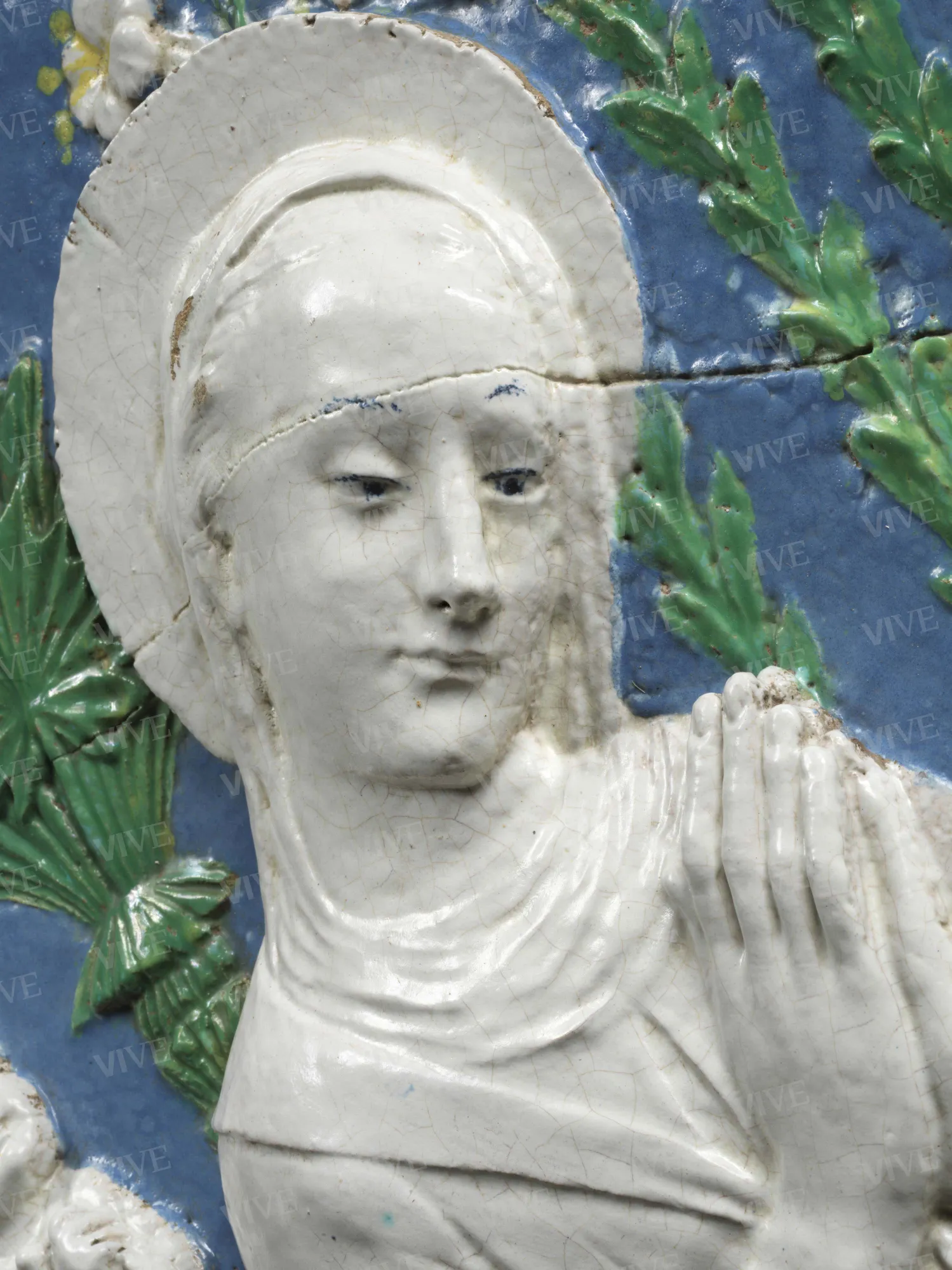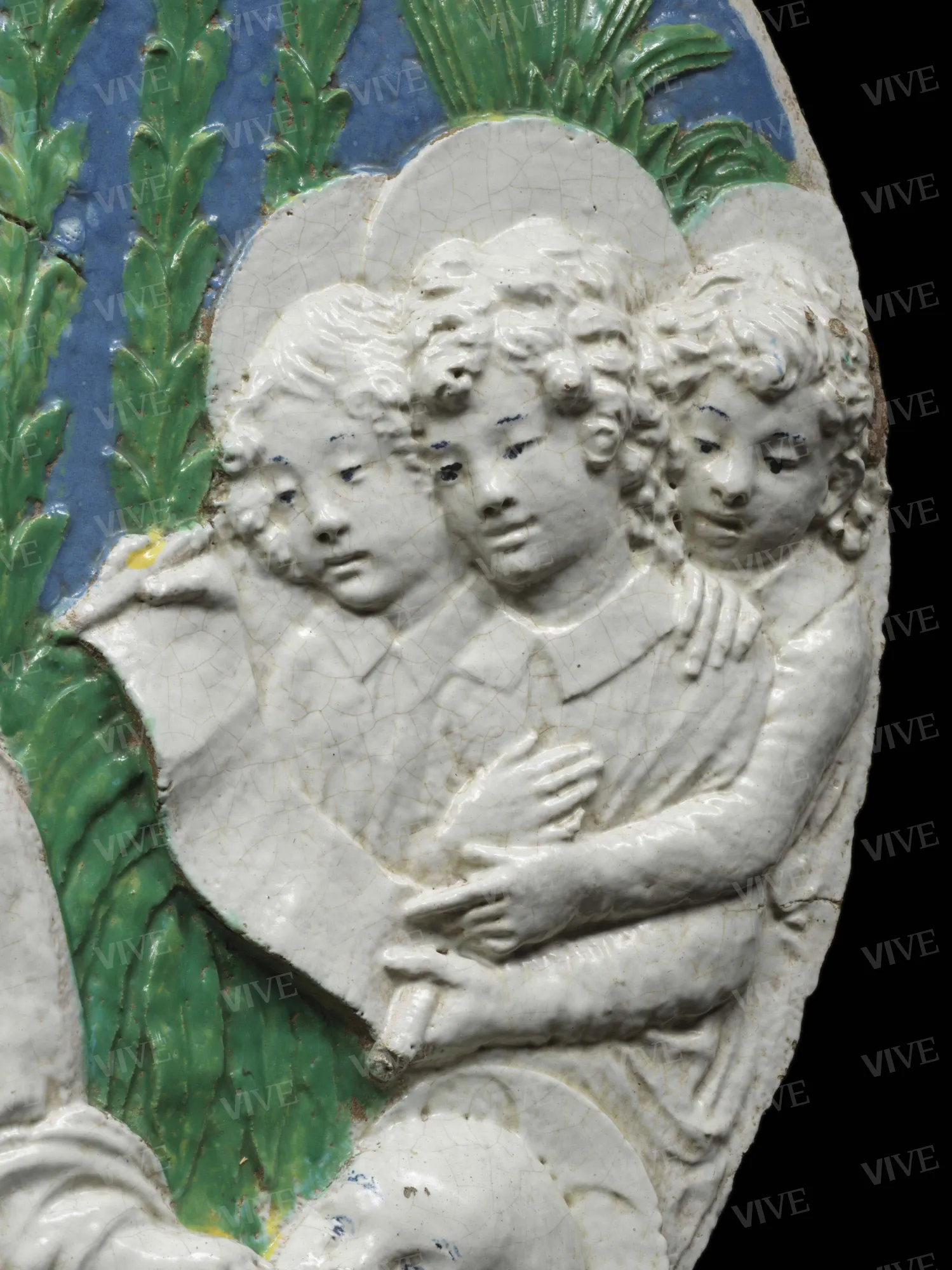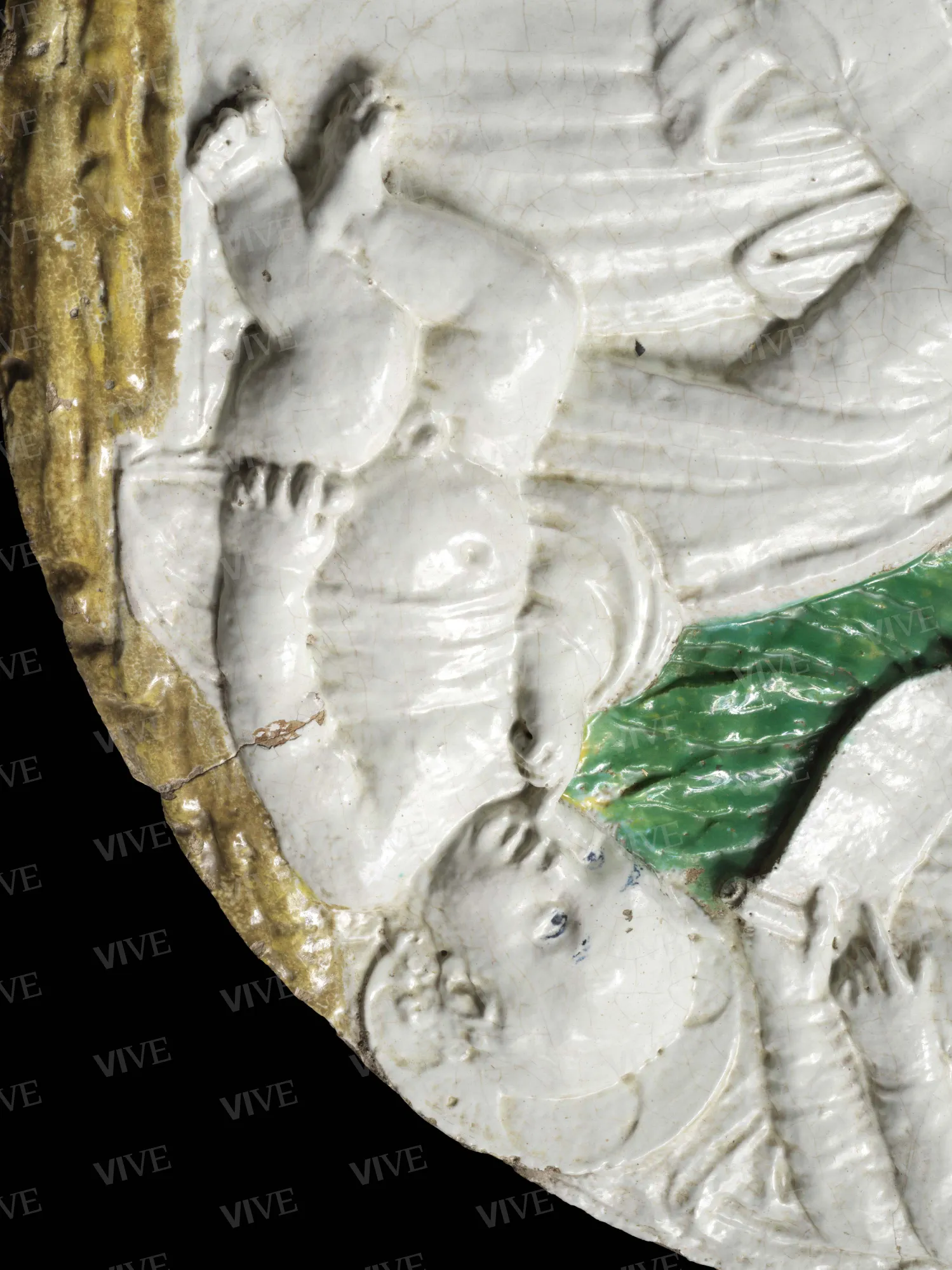Adoration of the Child with the Infant Saint John and the Singing Angels
Benedetto Buglioni Last twenty years of 15th century
A polychrome glazed terracotta roundel features the Virgin Mary adoring the Child, accompanied by the Infant Saint John and three singing angels. This piece is a variation of a popular type designed for private devotion, produced by the workshop of Benedetto Buglioni in the 1480s–1490s. It was inspired by a marble work by Antonio Rossellino, housed at the Bargello National Museum in Florence.
A polychrome glazed terracotta roundel features the Virgin Mary adoring the Child, accompanied by the Infant Saint John and three singing angels. This piece is a variation of a popular type designed for private devotion, produced by the workshop of Benedetto Buglioni in the 1480s–1490s. It was inspired by a marble work by Antonio Rossellino, housed at the Bargello National Museum in Florence.
Details of work
Catalog entry
The round glazed terracotta piece shows the Virgin in half-length, adoring the Child lying in front of her. Behind Mary, the young Saint John appears smaller, indicating he is set back in perspective. In front of her, three angels are singing from a scroll, which in other versions displays a musical score. Behind the Virgin and the angels, there are a bunch of lilies and two small palm trees, possibly a reference to the episode of the refreshment during the flight into Egypt.
The polychromatic glazing is characteristic of Benedetto Buglioni’s (1459/1461–1521) devotional reliefs. The white figures are set against a traditional blue background, with green stems of lilies and other plants, ochre rocky ground at the base, yellow pistils, and black eyes of the figures completing the palette. This tondo depicts a Marian image intended for domestic worship, produced by Buglioni’s workshop in various formats, differing in elements such as the type of frame, the number of lilies, and the inclusion or exclusion of young Saint John and the singing angels.
In 1912, Allan Marquand attributed this group of devotional reliefs to a so-called Master of the Madonna of the Lilies, considered a “follower of Antonio Rossellino” (Marquand 1912, ed. 1974, pp. 154–159). This group includes various shapes such as rectangular reliefs (formerly Los Angeles, County Museum), curved reliefs with only Saint John the Baptist (London, Victoria & Albert Museum; Gallarate, Collezione Orsini, and others), and circular reliefs like the one found in Florence at the Bargello, Perugia at the Galleria Nazionale dell’Umbria, Rocca San Casciano at Santa Maria delle Lacrime, among others. The original model for these representations is a marble tondo by Antonio Rossellino housed at the Bargello in Florence (inv. sculture n. 109), which was independently reinterpreted by the sculptor. Gentilini later proposed the attribution of this type to Benedetto Buglioni, a theory that has been supported by subsequent studies (Gentilini 1992, pp. 404 and 434; Domestici 1998, p. 541).
The work originates from the Roman collection of George Wurts and Henrietta Tower, an American couple. Henrietta Tower donated it to the Italian State, and it became part of the collections of Palazzo Venezia in the 1930s.
We extend our appreciation to Giancarlo Gentilini for his valuable advice.
Virna Ravaglia
Entry published on 27 March 2025
State of conservation
The item is in good condition overall, although there is a crack at the level of the Virgin’s head, likely resulting from a firing defect. Additionally, other areas are chipped.
Provenance
Rome, Collezione Tower Wurts, 1933;
Rome, Museo Nazionale di Palazzo Venezia, 1933..
References
Marquand Allan, Della Robbias in America, New York 1912 (ed. 1974), pp. 154, nn. 63-66;
Gentilini Giancarlo, Museo Nazionale del Bargello. Andrea e Giovanni della Robbia: nuove sale, Firenze 1984, p. 17;
Krahn Volker, Heynen Julian, Italianischen Renaissancekunst im Kaiser Wilhelm Museum Krefeld, Krefeld 1987, pp. 52-54, n. 12;
Gentilini, in Mannini Maria Pia, Il Museo Civico di Prato. Le collezioni d'arte, Firenze 1990, pp. 100-101;
Gentilini Giancarlo, I della Robbia. La scultura invetriata del Rinascimento, Firenze 1992, pp. 404-434, 448, nota 42;
Gentilini Giancarlo (a cura di), I della Robbia e l’"arte nuova" della scultura invetriata, catalogo della mostra (Fiesole, basilica di Sant'Alessandro, 29 maggio-1 novembre 1998), Firenze 1998, pp. 332-336, 341.

